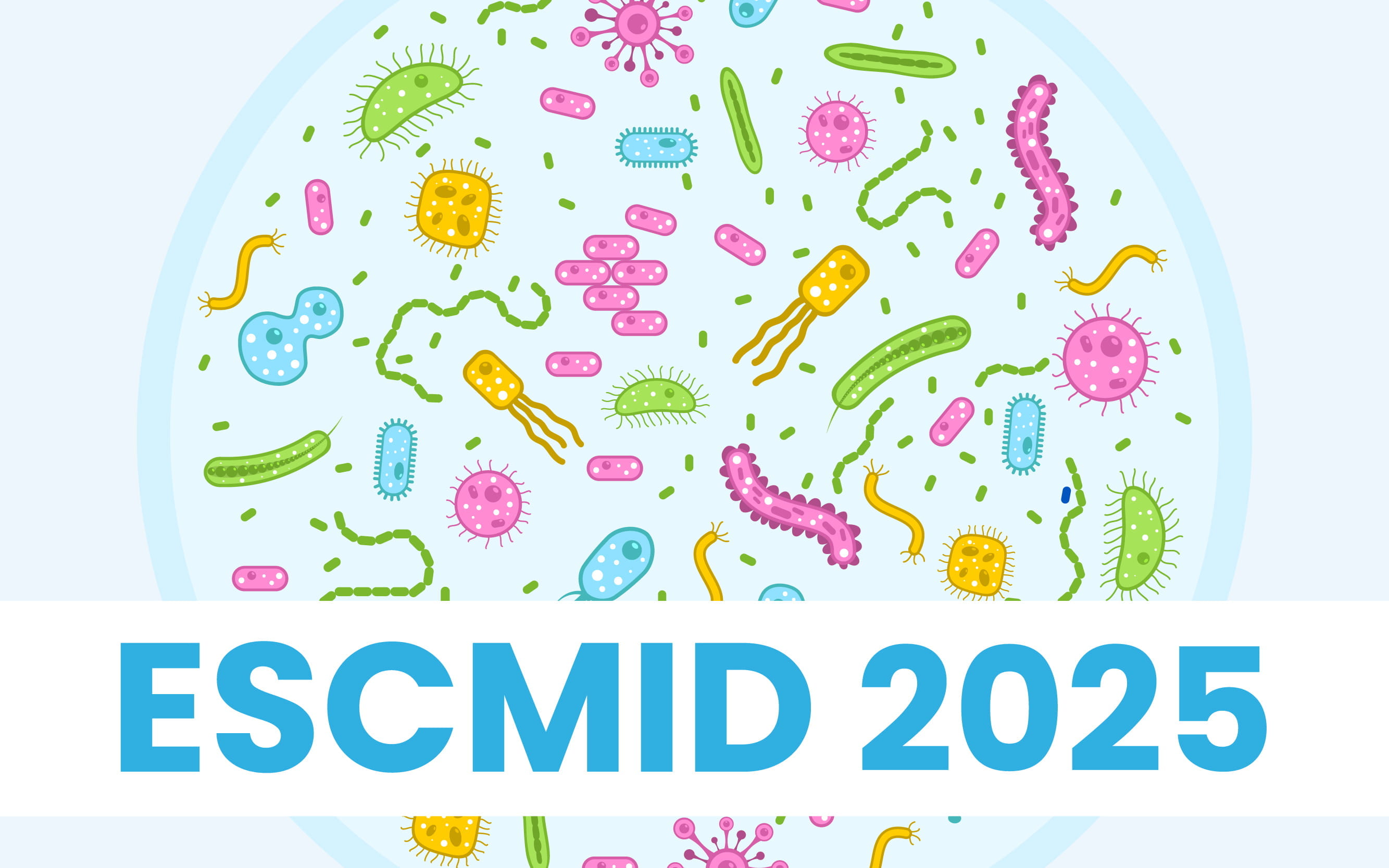ESCMID 2025: Novel Strategies for Eliminating the ‘Worst Films Ever’
Giving Antibiotics an Upper Hand in the Treatment of Biofilm Infections – Antibiotic Augmenting Strategies
Speaker: Dr Claus Moser, Denmark
Introduction:
Despite using antibiotics some kinds of infections still remain persistent which often happens because of biofilms. This biofilm associated tolerance is multifactorial and includes various factors such as metabolic gradient, dormant cells and altered environment that make eradication difficult.
There are various strategies for dealing with biofilms. A prior proposed strategy includes the following measures:
-
Prevention (e.g., prophylaxis) – most effective
-
Weakening biofilm establishment
-
Disruption of existing biofilms
-
Enhancing bacterial killing
2 more strategies were proposed:
-
Reviving dormant bacteria within biofilms which includes waking them up to make them vulnerable to antibiotics.
-
Immune modulation which includes enhancing the body’s own immune response to better target biofilm-embedded bacteria.
What is the importance of early Antibiotic Response?
Antibiotics are most effective when used early before biofilms mature. A flat response early on suggests a need to change the therapeutic strategy. In chronic infections like cystic fibrosis, complete eradication is usually rare, hence suppression is the goal. A case study of a Cystic Fibrosis Patient showed that quantitative sputum cultures showed a 5-log bacterial reduction over 14 days. It was observed that Biofilm morphology changed visibly under Gram stain, aligning with the in vitro observations.
What are the gaps seen in clinical translation?
There were over 3,000 scientific papers that were published on anti-biofilm strategies yet only 229 clinical trials ever registered, that were mostly in dental biofilms, chronic wounds, and orthopedic infections. The main difficulty lies in heterogeneous infection types and trial design complexity.
What is oxygen’s role in biofilm physiology?
Biofilms specially in cystic fibrotic lungs and wounds are hypoxic or anoxic. Oxygen is critical for bactericidal activity of antibiotics that generate reactive oxygen species (ROS) and studies show that oxygen-dependent antibiotic killing enhances efficacy therefore boosting oxygen levels may improve antibiotic activity.
Hyperbaric Oxygen Therapy (HBOT) in Chronic Wounds:
-
Preclinical Model
-
In the mouse burn wound model that was infected with pseudomonas aeruginosa, researchers embedded bacteria in alginate to mimic real biofilms. It was seen that the combination of HBOT and ciprofloxacin led to significant bacterial reduction and lower IL-1β levels. Though the healing was not significantly different but inflammation was attenuated.
-
Additional studies confirmed that HBOT increased tissue antibiotic concentrations, helping drugs work better in infected, low-oxygen areas.
-
Pharmacokinetics and Timing
-
Researchers tracked antibiotic distribution over time using larger beads to stimulate tissue compartments. It was seen that HBOT augmented antibiotic levels significantly after 3 and 4.5 hours post treatment.
-
The effect was even stronger in damaged tissue, suggesting HBOT can be especially useful in treating infected wounds where blood flow—and thus drug delivery—is poor.
Clinical Application in Diabetic Foot Ulcers:
HBOT was approved in Denmark for treating diabetic foot ulcers. Patients typically underwent 40 sessions over 8-10 weeks. After meta analyses it was concluded that there was improved healing but no consistent impact on amputation rates. There is a high need for randomised controlled trials.
HBOT in Infective Endocarditis (IE):
-
IE involves high bacterial loads in vegetation (>10⁹ CFU/g), low presence in bloodstream. Vegetation are complex structures made of bacteria, fibrin, platelets, and immune cells. The treatment requires prolonged and high-dose of antibiotic combinations.
-
A Pilot study was conducted which included 10 patients with left-sided IE (native and prosthetic valves). Patients underwent 4-6 HBOT sessions where no safety issues were reported. Decrease in platelet activation and neutrophil-platelet complexes was observed.
-
HBOT exerts its effects via multiple mechanisms of actions. It enhances the accumulation of reactive oxygen species (ROS) within bacteria. It also works in synergy with bactericidal antibiotics (e.g., ciprofloxacin, tobramycin) and enhances cell function.
-
Notably, HBOT has also demonstrated direct antibacterial activity against Staphylococcus aureus.
HBOT in Experimental Endocarditis (Rat Model):
This model involved catheter induced injury followed by infection with S. aureus. It was observed that the combination of HBOT + tobramycin reduced clinical scores, vegetation size, bacterial counts, and inflammation.
Conclusion:
HBOT demonstrates potential as an antibiotic-augmenting therapy in both chronic wound and IE models. Though it is promising in preclinical settings, clinical implementation demands robust randomized trials, strategic patient selection, and careful timing with existing therapies.
ESCMID Global, April 11-15, 2025, Vienna


